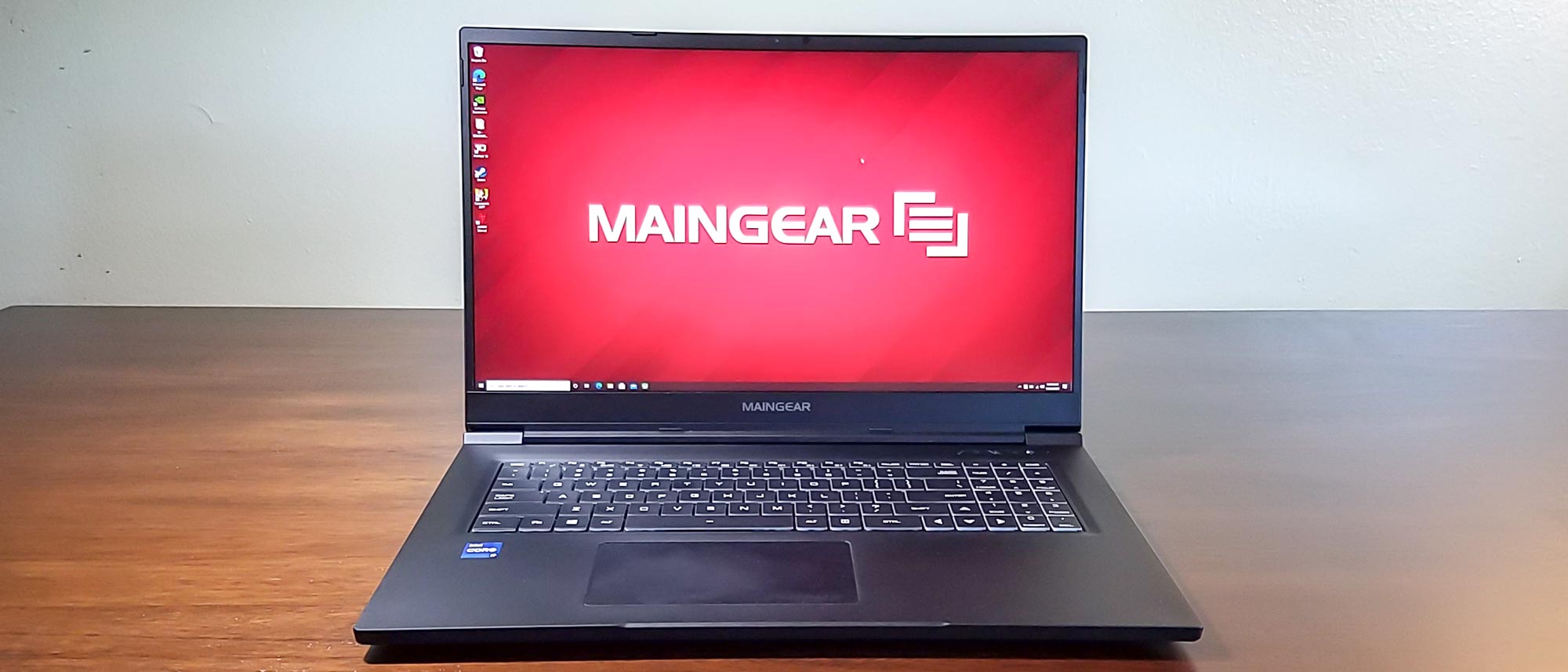Tom's Guide Verdict
The Maingear Vector Pro is a powerful gaming laptop that delivers exceptional performance in a thin chassis — if you can afford it.
Pros
- +
Rock-solid performance for gaming and everyday tasks
- +
Crisp, beautiful display
- +
Thin chassis is easy to carry
- +
Abundant ports
Cons
- -
Low speaker volume
- -
Subpar 720p camera
Why you can trust Tom's Guide
Price: $2,499 as reviewed
Display: 17.3-inch 16:9 QHD screen (2,560 x 1,440 pixels) (reviewed); 15.6-inch 16:9 FHD screen (1920 x 1080 pixels)
CPU: Intel 11th Gen Core i7 (reviewed); AMD Ryzen 9 5000 series
GPU: Nvidia GeForce RTX 3080 GPU (reviewed); Nvidia GeForce RTX 3070 GPU
RAM: 32GB (2x16GB) DDR4-3200MHz SODIMM RAM
Storage: 1TB M.2 NVMe SSD (reviewed); 2TB M.2 NVMe SSD
Ports: 1 USB-C w Thunderbolt 4, 3 USB-A 3.1 Gen 1, 1 HDMI, 1 Kensington lock, 1 Ethernet, 1 microSD reader, headphone jack, mic-in jack
Size: 15.5 x 10.2 x 0.79 inches
Weight: 5.00 pounds
The Maingear Vector Pro delivers the kind of experience players want from a gaming laptop. Powered by either an Nvidia GeForce RTX 3070 or 3080 (depending on configuration), the device runs most modern games as well or better than some desktop PCs. It is comparable to gaming laptops like the Razer Blade 15 Advanced and Asus ROG Zephyrus G14. In some respects, it outclasses both. Maingear’s device is serious business.
The Vector Pro’s power comes with a price, however, with high-end units costing nearly $3,000. Still, if you want to enjoy desktop-quality gaming wherever you go, it’s easy to recommend the Maingear Vector Pro — to those who can afford it.
Maingear Vector Pro review: Price and configuration
- 15 and 17 inch configurations available
- Expect to pay between $1,699 - $2,999
The Vector Pro is available exclusively from Amazon and Micro Center and comes in 15 and 17-inch configurations. You can get an Intel or AMD processor for either model. There’s also a choice between purchasing a unit with an Nvidia GeForce RTX 3070 or RTX 3080 graphics card. Most configurations feature a 1TB NVMe SSD and 32 GB of RAM, but models with 2 TB of storage or 64 GB of RAM are also available.
Pricing is somewhat scattered depending on where you shop and which model you opt for. On Amazon, the 15-inch model with an AMD CPU costs as low as $1,999 while the 17-inch model with a 2TB SSD sells for $2,999. Micro Center sells the 15-inch version as low as $1,699 and the 17-inch model with a 1TB SSD for $1,799 (discounted from $2,399).
We reviewed the 17-inch model with an Nvidia GeForce RTX 3080 GPU, Intel Core i7-11800H and 1TB of SSD storage. If you were to try and buy the same model on the day this review was published, you would pay roughly $2,499.
Maingear Vector Pro review: Design
- Thin, eye-pleasing all-black chassis
- Sturdy and easy to carry (for a gaming laptop)
The Vector Pro has a thin all-black chassis that’s pleasing to both see and hold. At 15.5 x 10.2 x 0.79 inches and 5 pounds for the 17-inch model, it’s not exactly a light and small device. Though it has some heft, it’s still easy to carry around in a bookbag.
The laptop feels sturdy and durable. Its lightly textured surface is smooth but not so smooth that it will slip from your hands when carrying it. Whether during active use or when transporting it, the Vector Pro feels like a premium product.
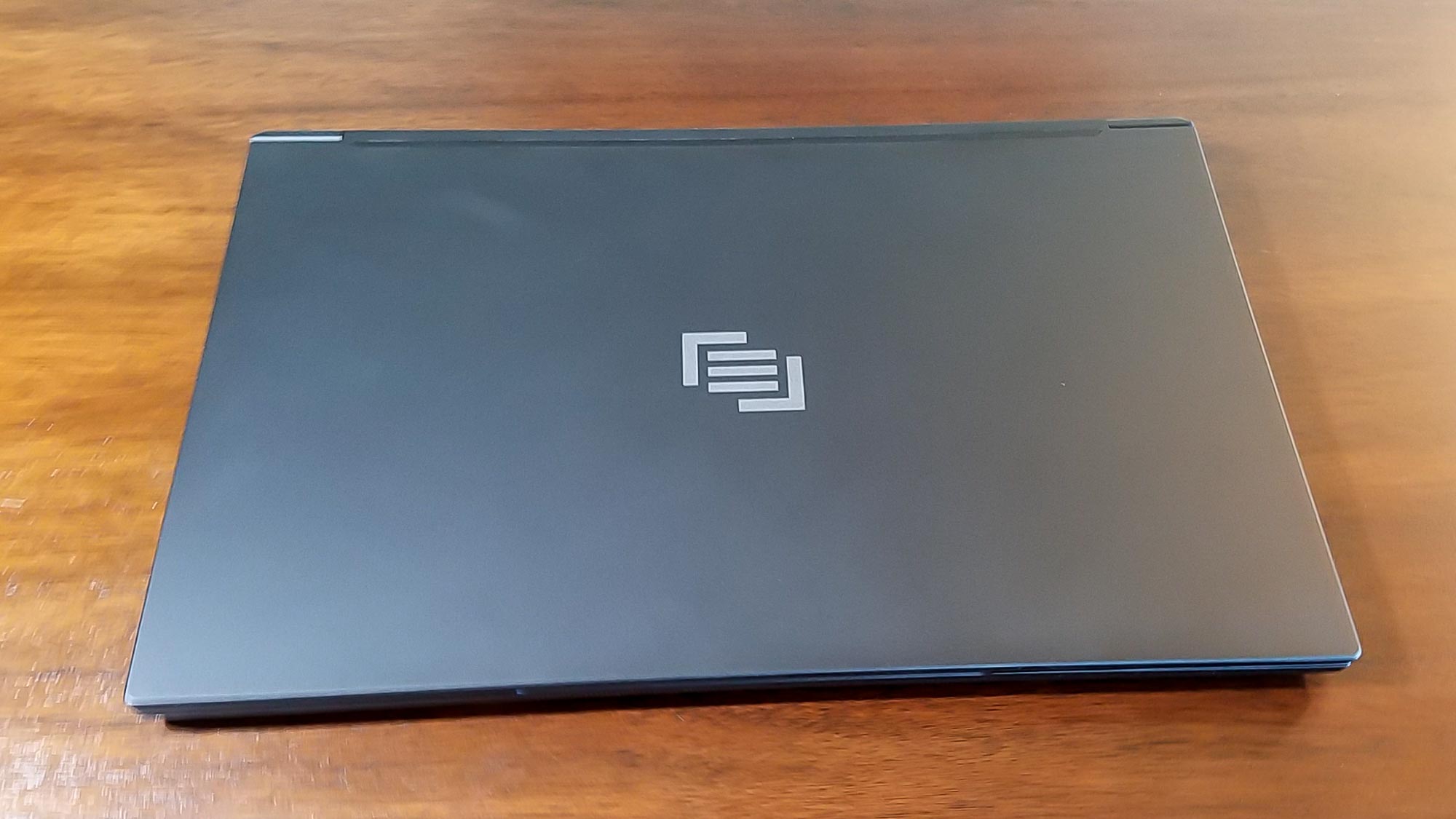
A grey Maingear logo adorns the top of the Vector Pro. The company’s name is also written underneath the screen. There’s a small amount of resistance when opening and closing the laptop. This not only contributes to the aforementioned sturdiness, but it means the hinges should withstand continued use for a long time.
Maingear Vector Pro review: Ports
- Plenty of ports to work with
The laptop’s right side has two USB 3.1 ports. Each supports USB 3.1 Gen 1 and 2.0 devices. You’ll also find a 2-in-1 card reader that supports SD, SDHC, SDXC and UHS-I cards. The card reader is perfect if you're a photographer who needs an efficient way to upload photos.
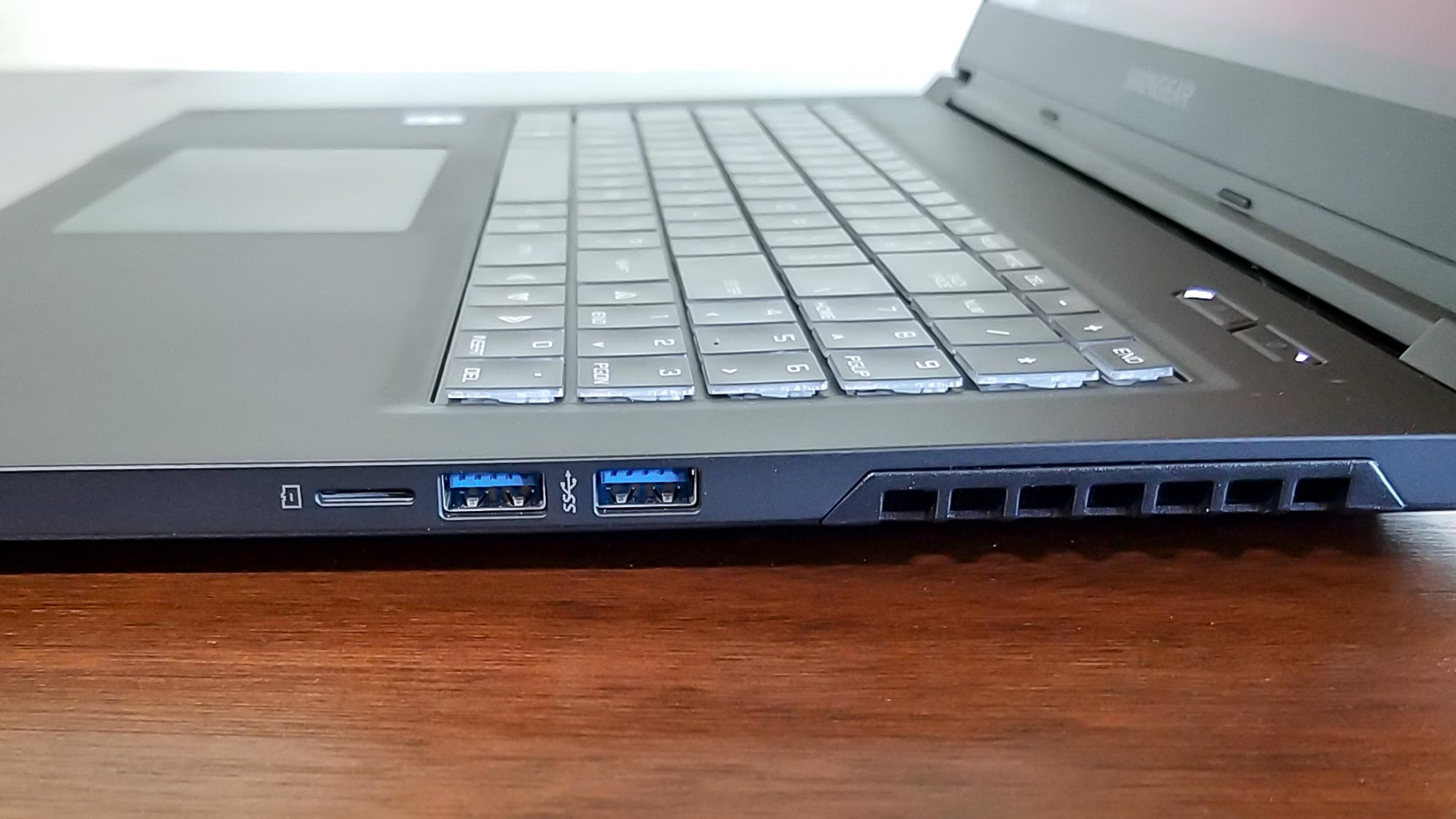
The left side has a USB 3.1 Gen 2 port, a mic-in jack and an audio jack. There’s also a Kensington lock port. The back has a network jack to connect to a LAN, an HDMI port, a Thunderbolt 4 USB-C port and a power connector. The Kensington lock port is crucial if you like to work from a cafe. You don't want someone stealing your laptop!
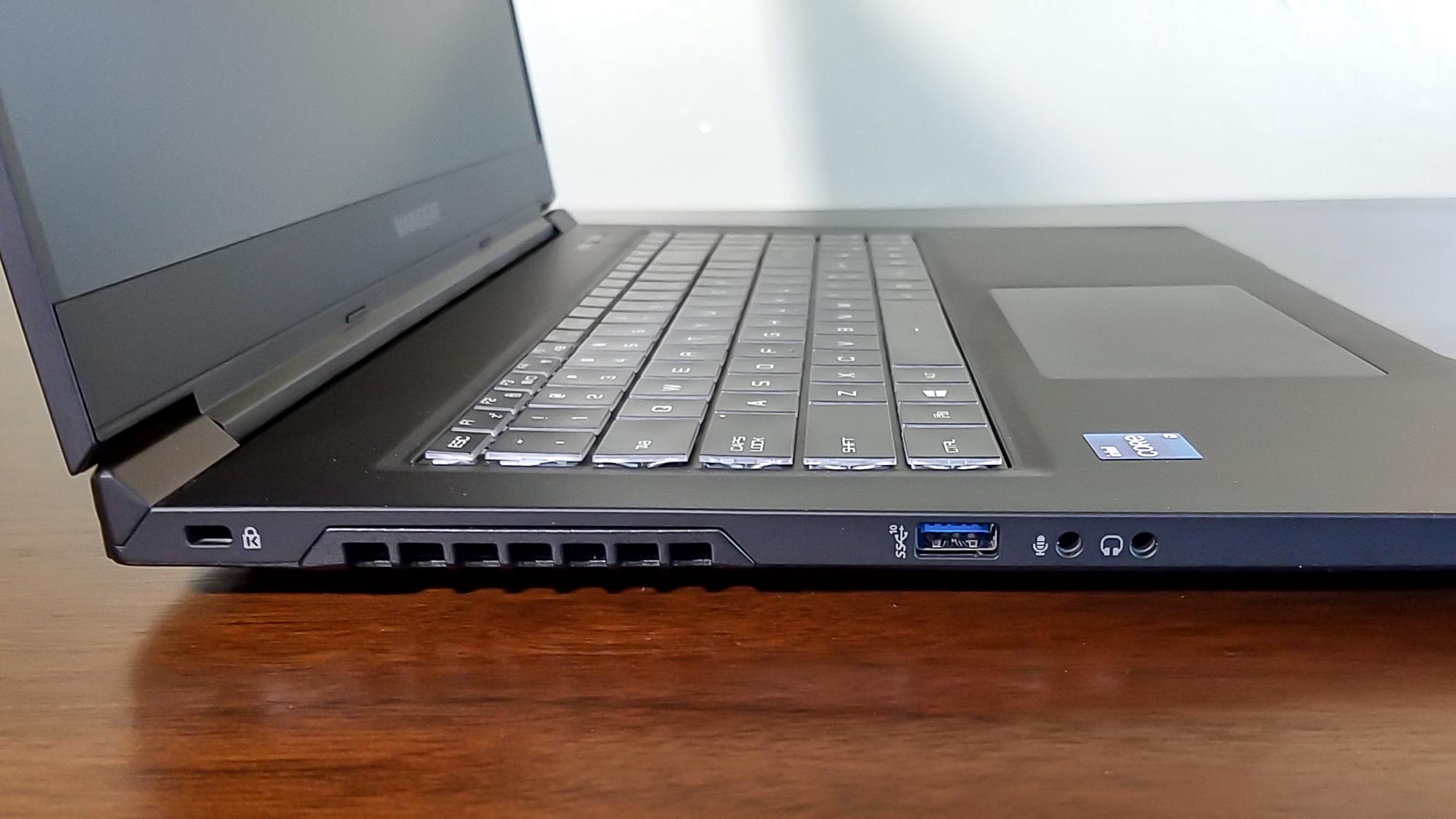
The Vector Pro is no slouch when it comes to ports. It has every type of connector you could need. The only negative is that you can’t charge the laptop with the USB-C port, though you can charge other devices with it.
Maingear Vector Pro review: Display and audio
- Crisp, clear 165Hz display looks phenomenal
- Speaker volume is decidedly low
As we mentioned, there are 15 and 17-inch configurations of the Maingear Vector Pro. Our review unit has a 17.3-inch display with a 2560 x 1440 pixel resolution and a 165Hz refresh rate.
This is how the Vector Pro stacks up against the Razer Blade 15 Advanced and the Asus ROG Zephyrus G14.
| Row 0 - Cell 0 | Maingear Vector Pro | Razer Blade 15 Advanced (11th Gen) | Alienware m15 R4 (2021) | Asus ROG Zephyrus G14 |
| Brightness (nits) | 345.6 | 313 | 293 | 320 |
| sRGB Color Gamut (%) | 113.5 | 109.1 | 111.3 | 110.3 |
| Delta-E | 0.2 | 0.24 | 0.3 | 0.24 |
Based on our lab testing, the display achieves an average of 345.6 nits, with the center of the screen reaching 382. This is less than the 400 nits advertised by Maingear but still above the 300 nits most gaming laptops tend to hit. Images appear clear in both dim and bright rooms, though you will want to avoid playing against direct sunlight to avoid a washed-out image.
Our colorimeter test found that the screen achieves 113.5% of the sRBG color spectrum and 80.4% of the DCI-P3 color gamut (the closer to 100%, the better). Colors appear vibrant and rich on screen, whether you’re playing video games, watching YouTube videos or simply browsing the web.
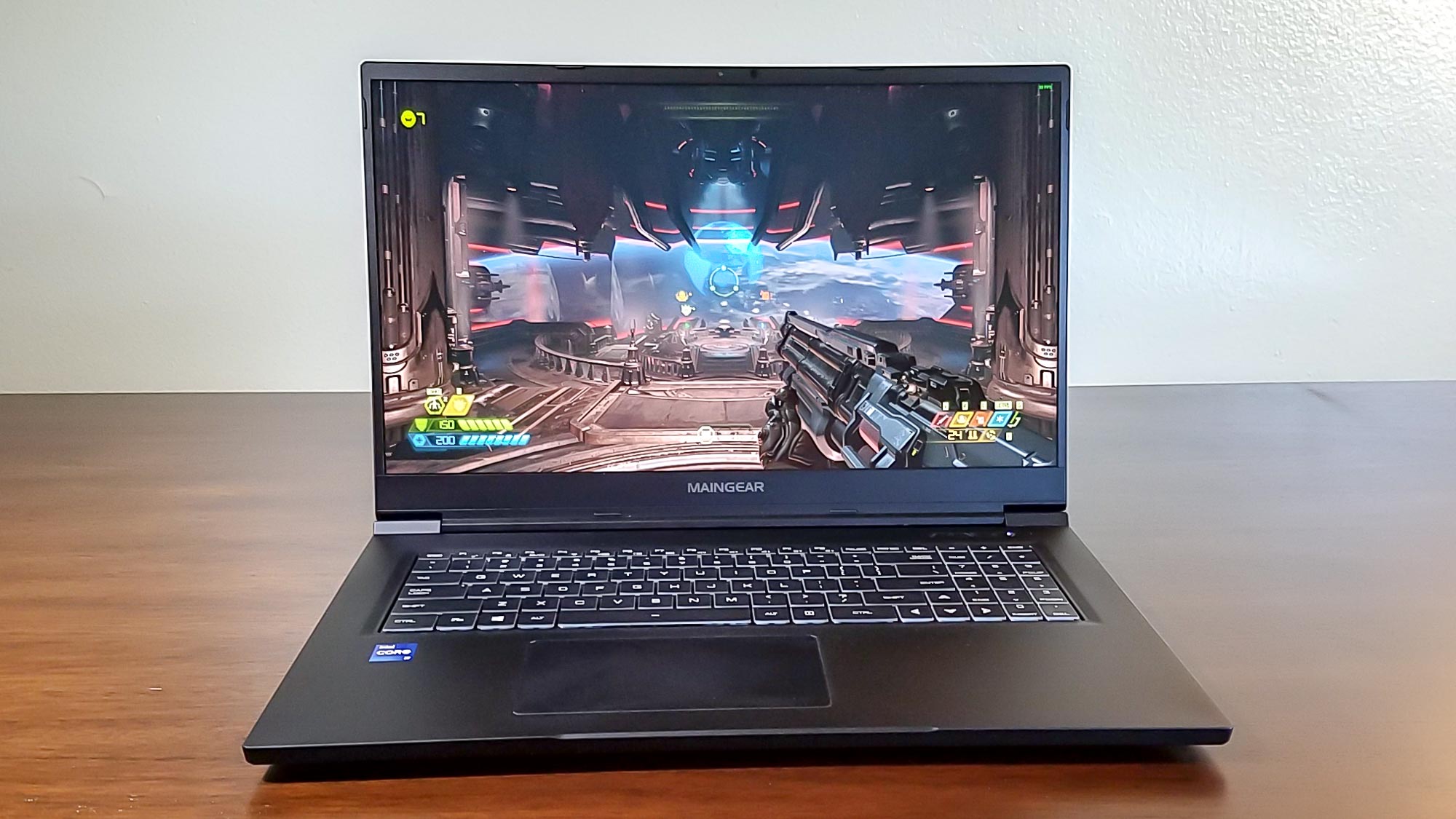
The laptop beats out the other units we compared it against. Asus' ROG Zephyrus G14 comes the closest with its 320 nits but the Razer Blade 15 Advanced (313 nits) and non-OLED Alienware m15 R4 (2021) (361 nits) fall short, though if you splurge for the Alienware m15 with an OLED display our testing shows it can get quite a bit brighter (460 nits) than the Maingear Vector Pro.
Audio quality is Vector Pro’s weakest aspect. The volume is surprisingly low, even at 100%. This was true for both YouTube videos and video games. The speakers crackled during gameplay, which became grating fast. The laptop is practically begging you to use headphones due to its subpar speakers.
Maingear Vector Pro review: Keyboard and touchpad
- Spacious keyboard and responsive touchpad
- No per-key RBG lighting
The keyboard gives your fingers ample space to move around. Keystrokes feel precise and pressing them creates a satisfying clicking sound. The palm rests beneath the keyboard appear overly spacious but you’ll appreciate the large surface area after a few minutes of typing.
Instead of per-key RBG lighting, the Vector Pro features four-zone lighting. This could be a problem for those who want more RBG options. I’m not a fan of RGB lighting so this wasn’t an issue for me. The pre-installed NODE control center app allows you to adjust the laptop’s lighting.

The large touchpad feels effortless to use. It never failed to accurately respond to swipes and presses. Using the touchpad quickly became second nature despite my preference for mice.
Maingear Vector Pro review: Performance
- Exceptional performance while gaming, delivering above 60fps in most titles
- Perfect for every day tasks
Our performance tests reveal the Vector Pro for the powerful gaming laptop Maingear bills it as. This is how it compares to two other gaming laptops.
Assassin’s Creed Valhalla, Grand Theft Auto V and Borderlands 3 all performed better on the Vector Pro than on the Razer Blade 15 Advanced and Asus ROG Zephyrus G14. The Razer Blade 15 Advanced only fell behind by a little over 10 frames per second in Assassin's Creed Valhalla and Borderlands 3 but almost 20 in Grand Theft Auto V. Maingear's Vector Pro outperformed the Zephyrus G14 in both aforementioned titles by over 30 and 40 frames per second.
The Alienware M15 R4 proved to be a decent match, with frame rates inching close to what we saw on the Vector Pro. In the case of Grand Theft Auto V, the frame rate difference is negligible at best.
| Row 0 - Cell 0 | Maingear Vector Pro | Razer Blade 15 Advanced (11th Gen) | Asus ROG Zephyrus G14 | Alienware m15 R4 (2021) |
| Assassin's Creed Valhalla (1080p) | 74 | 67 | 36 | 82 |
| Borderlands 3 (1080p) | 89 | 74 | 41 | 100 |
| Grand Theft Auto V (1080p) | 124 | 106 | DNR | 125 |
My own qualitative tests saw equal results. Titles like Doom Eternal and Red Dead Redemption 2 ran buttery smooth. Doom Eternal was the big winner, reaching frame rates as high as 104fps at 1080p on High settings. Cyberpunk 2077’s frame rates fluctuated between the low thirties and high fifties. We can’t blame the laptop in this case, given all of Cyberpunk 2077’s optimization issues (as detailed in our review). Frame rates drop precipitously without the AC adapter connected, so be sure to stay plugged in while gaming.
Everyday tasks aren’t a problem for the Vector Pro. I never had issues browsing the web or watching the latest Star Talk episode on YouTube. It even proved to be an effective work computer, thanks to its comfortable to use keyboard and touchpad.
Maingear Vector Pro review: Battery life and heat
- Average battery life for a gaming laptop
- Doesn't become overly warm even when gaming
Our tests reveal an average of 6 hours and 24 minutes of battery life when performing normal tasks like web browsing and watching videos. You won’t get more than 1 hour and 34 minutes while gaming, as revealed by a PCMark 10 benchmark test. As such, you’ll want to keep the AC adapter plugged in (as mentioned before).
These results surpass the Alienware m15 R4's 1 hour and 26 of gaming time and are comparable to the Razer Blade 14 (6:02 web browsing, 1:17 gaming). However, they pale in comparison to the Asus ROG Zephyrus G14’s impressive 11 hours and 32 minutes of browsing time.
Our heat test found that the Vector Pro reaches an average of 92.3 degrees Fahrenheit with normal usage and an average of 110 degrees while gaming. It took less than five minutes of playing Doom Eternal before fan noise became noticeable, though not irritating. Despite the heat, the laptop felt lukewarm at most when gaming.
Maingear Vector Pro review: Webcam
- Good for video conferencing but that's about it
The webcam, situated above the display, is adequate at best. Its 720p resolution works well enough for video conferencing or private chats but the somewhat hazy video quality and subdued colors disappoint. Thankfully, you can always connect an external camera to get better picture quality. There are no privacy shutters to speak of.
Maingear Vector Pro review: Verdict
The Maingear Vector Pro is one of the most impressive and powerful gaming laptops we’ve reviewed. Though pricy, it has everything a player could want from a gaming laptop. The RTX 3000 cards help the device run most titles well above 60fps and its crisp display brings out even the tiniest details. Outside of gaming, the laptop also serves as a secondary work computer.
Despite its weak speakers and webcam, the Maingear Vector Pro is an excellent device. If you can afford it, it’s worth your money if you’re in the market for a thin, powerful gaming laptop.

Tony is a computing writer at Tom’s Guide covering laptops, tablets, Windows, and iOS. During his off-hours, Tony enjoys reading comic books, playing video games, reading speculative fiction novels, and spending too much time on X/Twitter. His non-nerdy pursuits involve attending Hard Rock/Heavy Metal concerts and going to NYC bars with friends and colleagues. His work has appeared in publications such as Laptop Mag, PC Mag, and various independent gaming sites.
